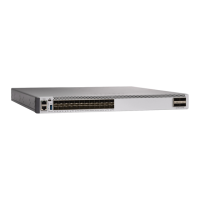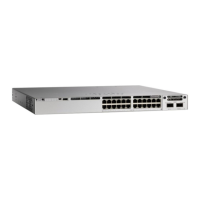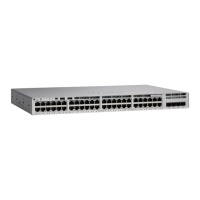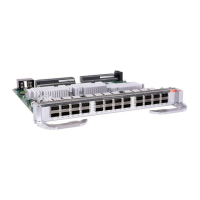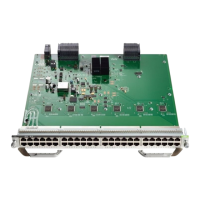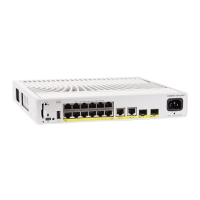Configuring OSPF Interfaces
You can use the ip ospf interface configuration commands to modify interface-specific OSPF parameters.
You are not required to modify any of these parameters, but some interface parameters (hello interval, dead
interval, and authentication key) must be consistent across all routers in an attached network. If you modify
these parameters, be sure all routers in the network have compatible values.
The ip ospf interface configuration commands are all optional.Note
Procedure
PurposeCommand or Action
Enters the global configuration mode.configure terminal
Example:
Device# configure terminal
Step 1
Enters interface configuration mode, and specifies the
Layer 3 interface to configure.
interface interface-id
Example:
Device(config)# interface
gigabitethernet 1/0/1
Step 2
(Optional) Explicitly specifies the cost of sending a
packet on the interface.
ip ospf cost
Example:
Device(config-if)# ip ospf 8
Step 3
(Optional) Specifies the number of seconds between
link state advertisement transmissions. The range is 1
to 65535 seconds. The default is 5 seconds.
ip ospf retransmit-interval seconds
Example:
Device(config-if)# ip ospf
transmit-interval 10
Step 4
(Optional) Sets the estimated number of seconds to wait
before sending a link state update packet. The range is
1 to 65535 seconds. The default is 1 second.
ip ospf transmit-delay seconds
Example:
Device(config-if)# ip ospf
transmit-delay 2
Step 5
(Optional) Sets priority to help find the OSPF designated
router for a network. The range is from 0 to 255. The
default is 1.
ip ospf priority number
Example:
Device(config-if)# ip ospf
priority 5
Step 6
Routing Configuration Guide, Cisco IOS XE Everest 16.6.x (Catalyst 9500 Switches)
95
Configuring IP Unicast Routing
Configuring OSPF Interfaces

